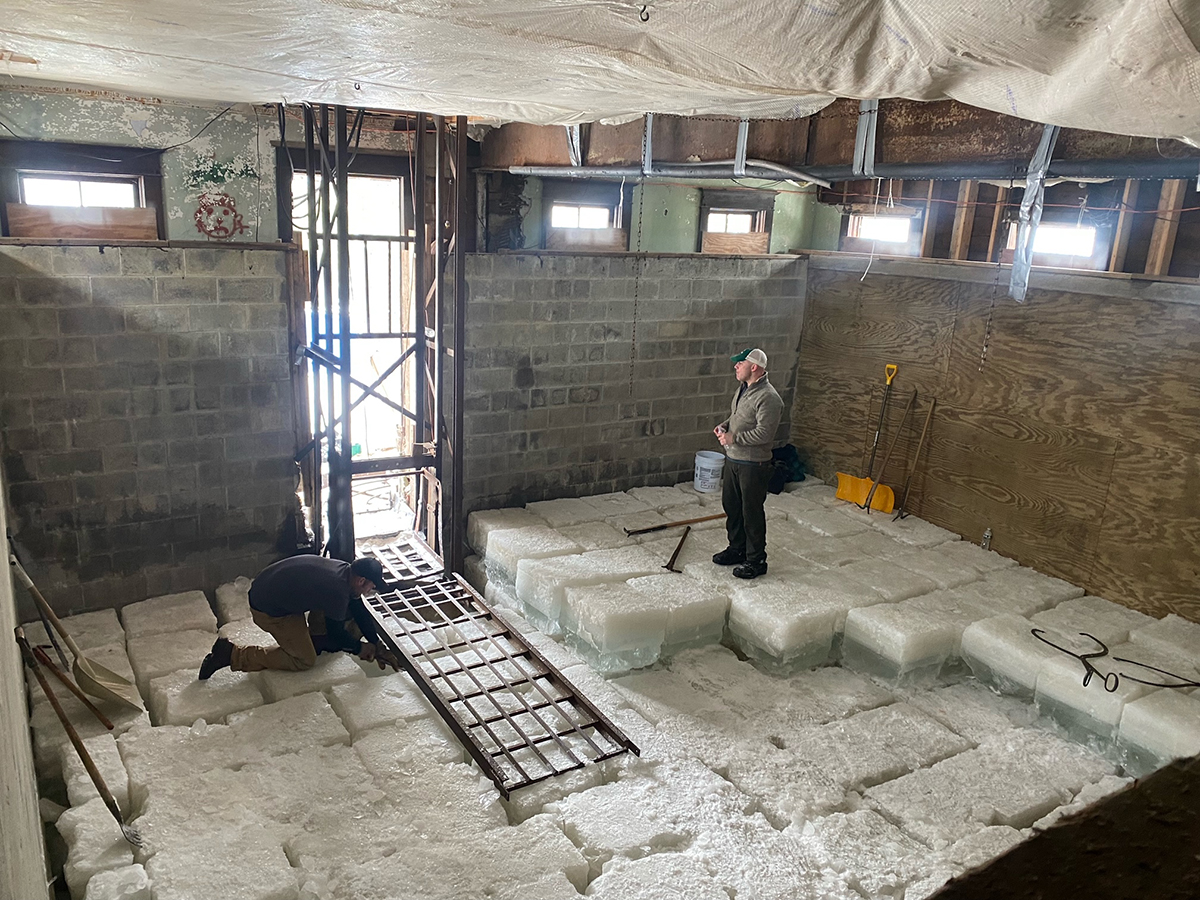
Raquette Lake’s Annual Ice Harvest - Continuing a Century-Old Tradition
By: Blake Neumann - Adirondack Council Clean Water Advocate
Tuesday, March 15, 2022
Saturday, February 19, saw Raquette Lake’s annual ice harvest, a tradition that originated over a century ago in the region. During the event, community members used traditional ice harvesting equipment and machinery to cut and transport ice blocks harvested from the bay where the Brown’s Tract Inlet empties into Raquette Lake. The ice blocks are stored on-site for refrigeration and cooling of the Raquette Lake Supply Company throughout the summer. The event made for a long, but informative and fun, day.
The History of the Harvest
The historic Raquette Lake Railway operated from 1900 to 1933 as a passenger and freight line, according to Harold Hochschild. The line never turned a profit, but during the period from 1906 to 1922, it was used to transport ice from Raquette Lake to the N.Y. Central Railroad, at which point the ice made its way further downstate. Raquette Lake’s ice was then transported all over the world during this period, perhaps as far as Singapore, based on a conversation with one event volunteer. The old Raquette Lake rail station is now little more than its original foundation following a 1972 fire, but can be spotted by a sign designating the area as a New York State historic site, erected by the William C. Pomeroy Foundation in 2021.
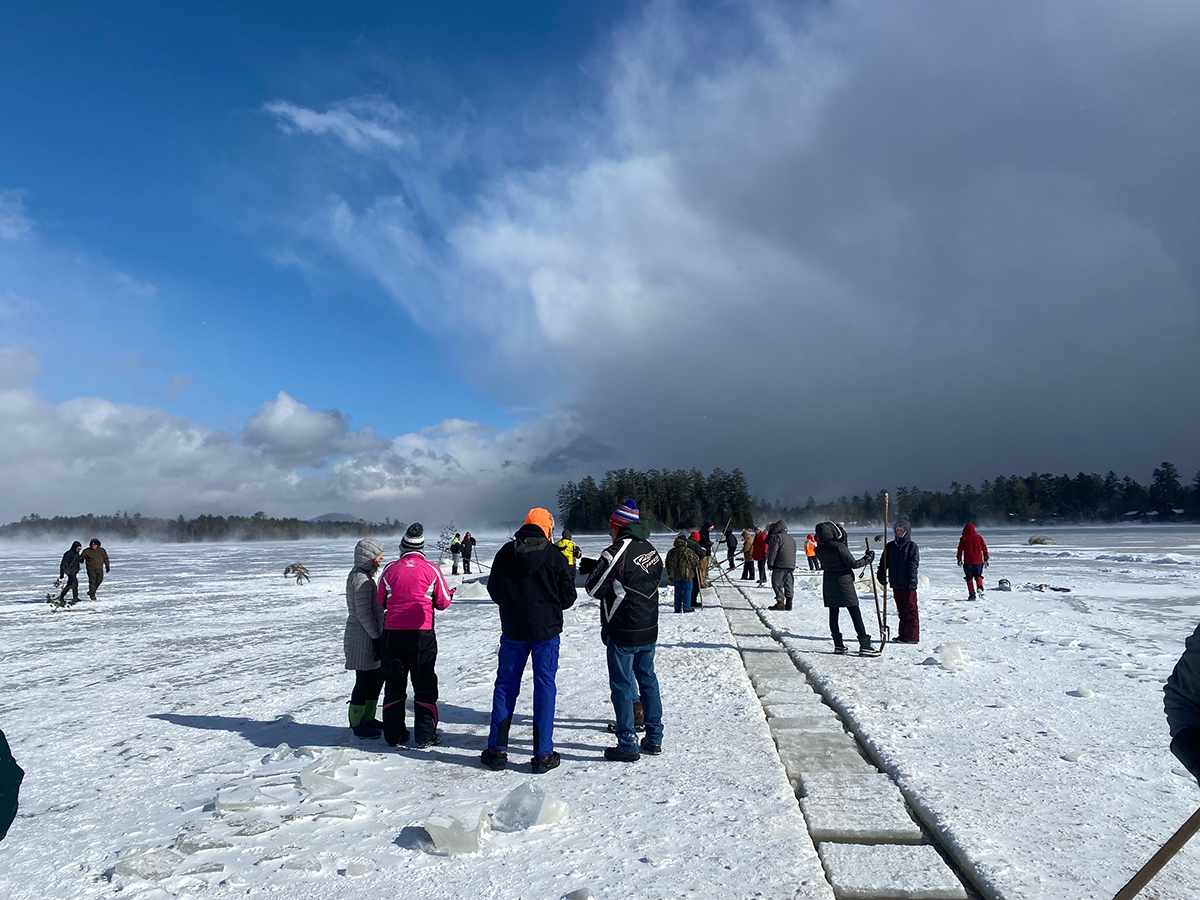
Nowadays, the ice harvest is a bit less industrial in nature, though you wouldn’t guess by watching (or speaking with) the volunteers at the event. Many of the community members have attended the harvest regularly for decades and are familiar with the many tasks needed to complete the harvest, not to mention the more nuanced elements of some of these jobs. For instance, I was advised that I ought not stand too close to the channel that was carved in the ice by which the blocks were moved from the bay towards the shore and loaded onto the conveyor - the open water and sloshing of the blocks causes the ice along the sides to gradually erode and a misstep could send you into the frigid water!
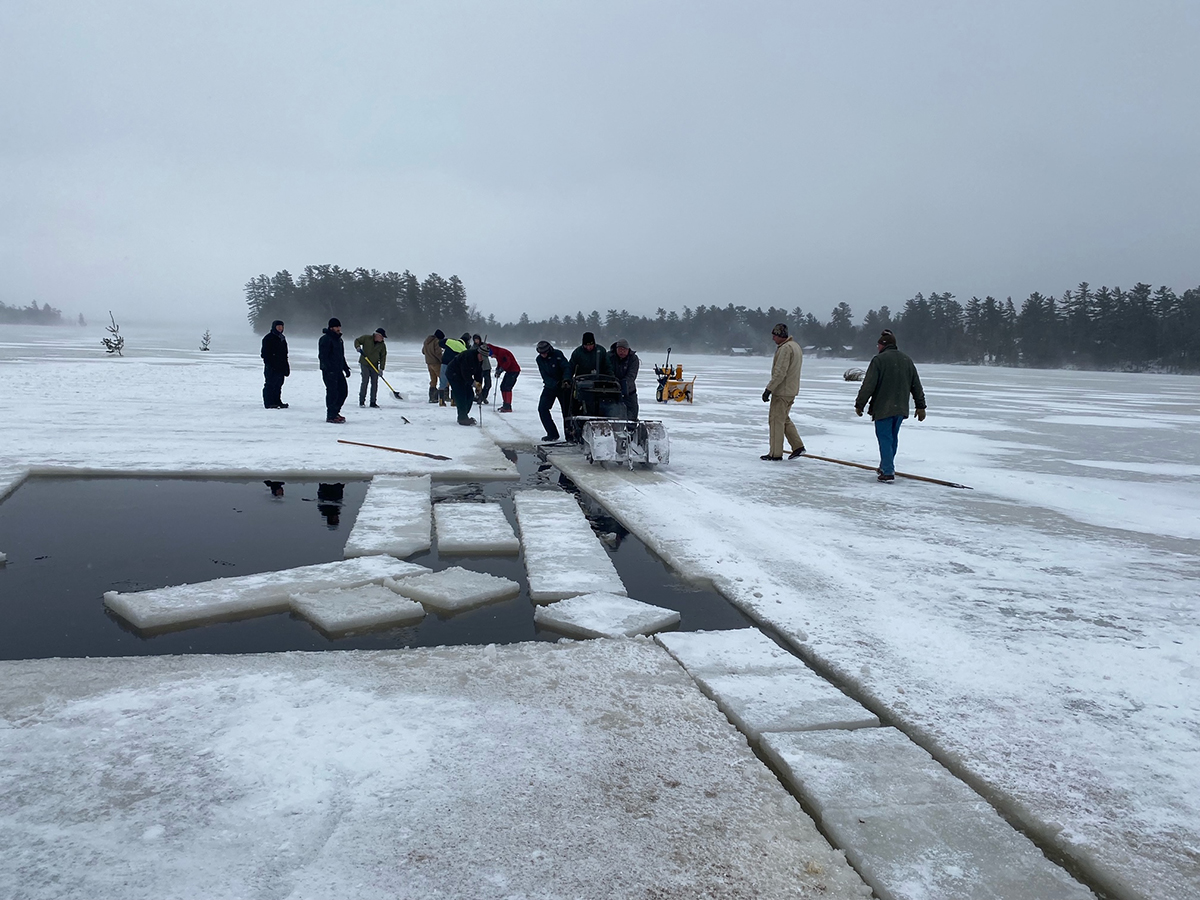
Tools of the Trade
The process of preparing the ice entailed some of the following activities: first, a snowblower was used to clear snow from the ice surface and uncover the first solid layer (others would later use shovels and other instruments to brush slush and loose snow off the blocks before loading them onto the conveyor). The surface of the ice was marked to provide guides to those that were doing the cutting of the ice. An “ice saw,” which looked like an oversized gas-powered circle saw, was then used to cut ice in long strips, leaving the bottom three inches of the ice above the lake surface intact. Others then came with one-handled pull saws and chainsaws to finish the job. The strips were cut into roughly 18" by 18" blocks – this year, the ice thickness was around 16 inches, making the final dimension of the blocks.
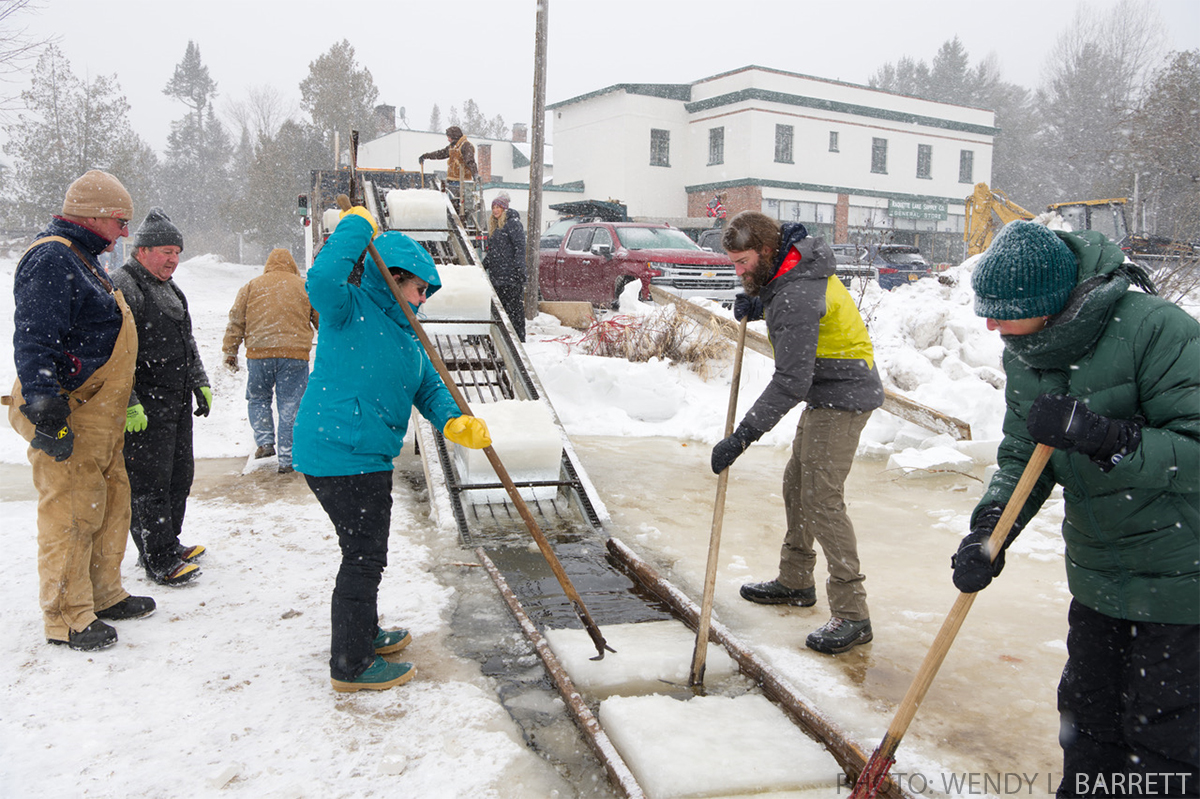
Volunteers then used long-handled “pike poles” (instruments used for log-rolling in addition to ice harvesting) near the open water area of the bay to catch the blocks and route them to the channel. Volunteers on either side of the channel then used shorter pike poles to move the blocks down the long channel to the conveyor belt. I worked with a few others to help load the blocks onto the belt, calling out any irregularities in the blocks that could potentially de-rail the conveyor. The blocks were moved onto flatbed trucks in quick succession and were then taken around to the icehouse, where they would be stacked off from the floor to the ceiling using sawdust as insulation. The process was an all-day affair (some years apparently extending well into the night), broken up by a delicious lunch of home-style chicken and biscuits served to volunteers in the Raquette Lake Supply Company store.
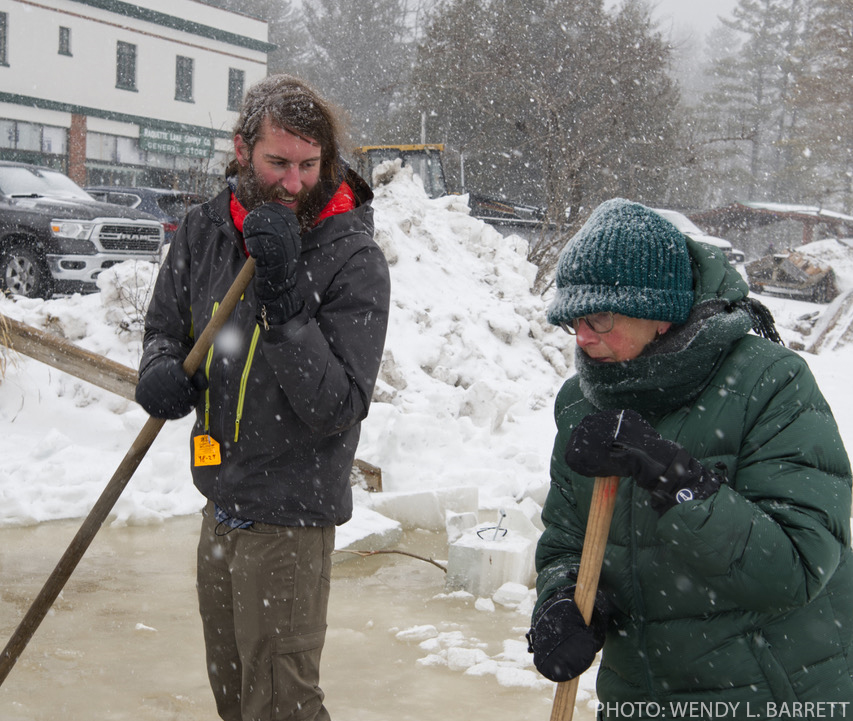
Lessons in Community-Building
While being a uniquely significant element of the cultural heritage of the region and informing a palpable “sense of place” for participants, the event also embodies a spirit of inclusivity and inter-connectedness that was deeply heartening to watch. Many volunteers were year-round residents of Raquette Lake, but many were seasonal residents who rely on the Raquette Lake Supply Company for groceries and other staples during the summer. Others were weekend or day visitors, stopping through to enjoy the winter carnival. Everyone was welcomed heartily into the mix with a pike pole or ice basket, to remove from the channel the inevitable chunks that sheared off from blocks during their transport. Having never participated in anything similar, I was struck by how seamlessly I was accepted into the group, and how patient the long-time participants were with me as I navigated learning the foreign tools and processes!
The commitment of the volunteers to roll up their sleeves and dedicate significant time for this event that will serve the wider community through the summer was admirable; though, more inspiring was how unremarkable and commonplace this type of cooperation and teamwork for the benefit of the community seemed to be for the community members.
As the Adirondack Council continues its work with the Raquette Lake Preservation Foundation in planning for the implementation of the recently completed Lake Management Plan, lessons from this type of community-building exercise will be valuable in informing how we have conversations about topics like aquatic invasive species management and other water quality pressures. Eventually, this groundwork will be essential for moving toward a watershed management vision that is inclusive of a more engaged and invested community user base that is designed to benefit and sustain the Raquette Lake Watershed long into the future.

Blake Neumann joined the Council in 2021 as the Clean Water Advocate. A Kentucky native, his deep love of the Adirondacks comes from his childhood summers spent paddling and camping with family around the Park. Blake holds a Master’s in Public Administration from Syracuse University and a Master’s of Science in Water & Wetland Resource Studies from SUNY-ESF. He most recently was doing similar watershed planning for The Nature Conservancy in Wisconsin. When not working, Blake can be found running or skiing nearby trails, swimming anywhere he can, or in his canoe with his furry co-pilot, Jackson.

